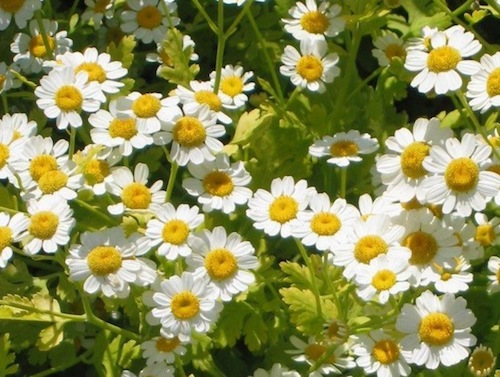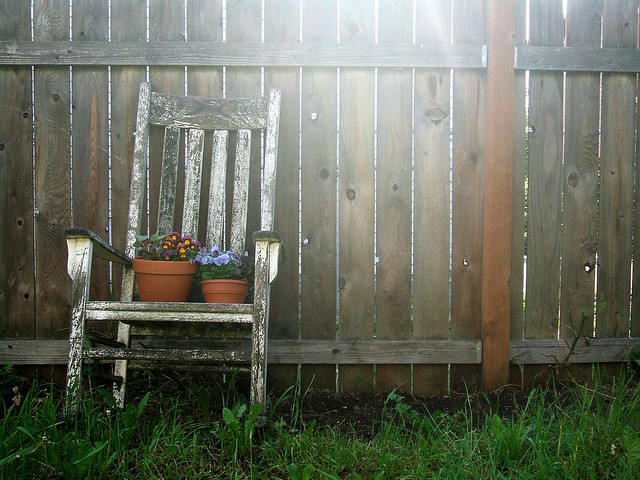*Editor’s Note: No website is designed to, and can not be construed to, provide actual medical advice, professional diagnosis or treatment to you or anyone. Elephant is not intended as a substitute for medical or professional advice, care and treatment.
I am beginning to open my eyes to the healing potential in my backyard.
It’s exciting to realize that my backyard contains some tried and true (over the ages) remedies and food for my family. I truly have a living pharmacy right outside my door.
For many years, I have relied on others for my aches and pains—going to the doctor, getting prescriptions filled, taking all sorts of pink colored and flavored liquids to soothe this and heal that.
I grew up on a farm.
I had all the privileges of fresh homegrown foods—fresh eggs and chicken, veggies from the garden, fruit trees and raspberry bushes, and yet…as a child of the 60’s and 70’s, I preferred McDonald’s, Hamburger Helper, Captain Crunch, frozen TV dinners, and pixie sticks with my friends—convenient, cheap, super tasty and comforting.
Little did I know how tough my choices were on my body, and how I would begin a journey to unravel and unwind all my body’s patterns in order to support a new vision of well being. I was oblivious to the reality of having a long, slow health crisis.
Identifying and connecting to the Earth and her natural remedies is helping me to support and balance my tired, depleted and fear-based body, mind and spirit and identify with a more positive and potential-filled outlook.
The very plants and weeds I have stepped on in the past or dismissed as “weeds,” I can now admire and look at in a new light—they are our medicine, allies and even future. Instead of rushing to the pharmacy at the first sign of illness, I am more contemplative as I approach my own health.
Here are a few examples of powerful herbs/plants/weeds to get you started on your own journey:
Dandelion—Taraxacum Officinale (Fam.: Asteraceae (Compositae))

These were once considered to be associated with the peasants because those who had money could keep their manicured lawns free of them with regular maintenance and pesticides. They are, for many, a nuisance, and efforts are taken to eradicate them, but knowing how valuable the plant is can change that in an instant.
Every part of the dandelion can be used. The mere abundance of them can cast a sunny glow over your yard (and your spirit). The tops can be stir fried or baked. The spring-time leaves (jagged like the teeth it is named after) can be made into a pesto or used in a salad; the long tap root I dig up in the fall to make an infused apple cider vinegar which can then be poured over steamed greens or made into salad dressings for year round use. Dandelions are bitter and their use can stimulate digestion and support the liver in detoxification.
They are considered gentle.
Plantain—Plantago Lanceolata L. (Fam.: Plantaginaceae)
This herb is one that I literally have stepped on and until recently did not know how important it is for all sorts of bites, stings, etc. It is aptly called “nature’s bandaid.” I work with bees, and it is a great ally. Its long tongue-like and grooved leaves can be wrapped around a sore finger. Freshly chewed, the leaves can be placed on the sting and work quickly to relieve pain and swelling, helping to quickly draw any toxins out of the body.
Yarrow—Achillamillefolium L. (Fam.: Asteraceae (Compositae))
I love this warrior goddess. She is an energetic protector with strong antiseptic qualities. The leaves are chewed, and its styptic constituents can stop internal and external bleeding. The leaves and white flowers/florets can be used as a tea to help when coming down with colds and flus while bringing some warmth to the skin’s surface. Externally, I have used this plant in a white vinegar infusion to clean the house physically as well as spiritually.
Feverfew—Tanacetum parthenuim (Fam.: Asteraceae(compositae))

An excellent remedy for headaches and in particular migraines because of its anti-inflammatory actions. My youngest son has frequent and painful headaches and he now knows that he can go outside and find a leaf and chew on it (he was willing to try anything. He does not, however, share that information with his friends quite yet).
Why weeds? They are hardy and they are everywhere.
They are forgiving. They have free will and, at some level, they can support our free will. They grow in certain places that tell us about how they can contribute—for example, lambs quarter or wild spinach grows where the iron is strong in the soil: nettles grows near waste systems and uses those nutrients to give back in the leaves as one of the most nutritive early spring offerings.
The parts of the plants can have different qualities and offerings.
I recommend learning to identify the weeds that are growing in your yard. Spend time greeting the plants, making offerings, connecting to them, harvesting them and then giving thanks for the plant and its life and its actions. How we use them can depend on our intentions. Their help can be potent, with our deep listening and efforts to appreciate them.
As with any herb or drug, it is best to seek the advice of your physician when using herbs especially if you are on any medications. The above information is not in lieu of medical advice. It is a very empowering experience to take charge of my health and wellbeing. It is a path.
Love elephant and want to go steady?
Sign up for our (curated) daily and weekly newsletters!
Editor: Catherine Monkman
Photo: wikimedia, wikimedia, wikimedia, wikipedia, Maureen Didde/Flickr













Read 8 comments and reply